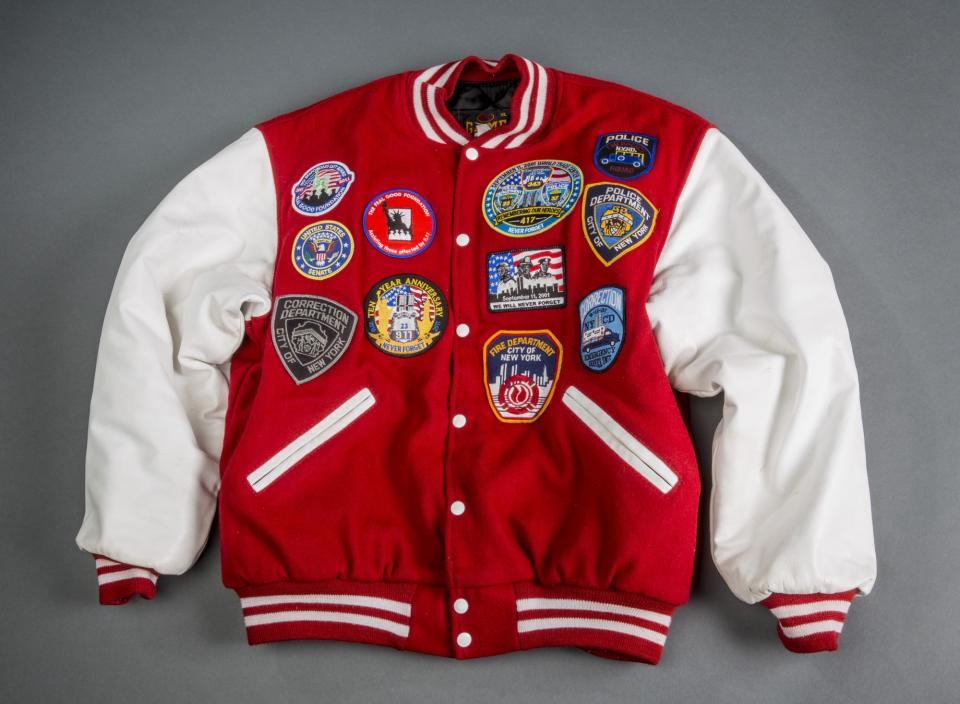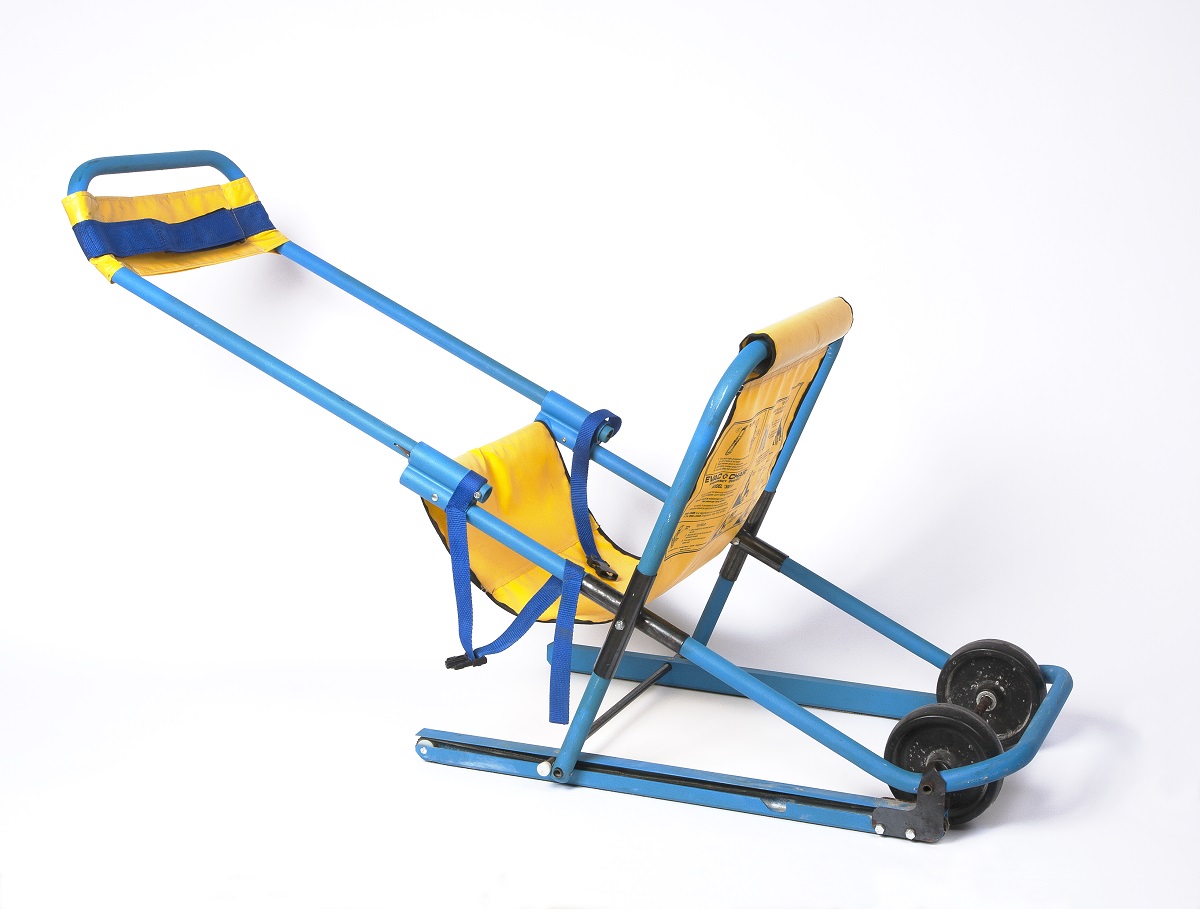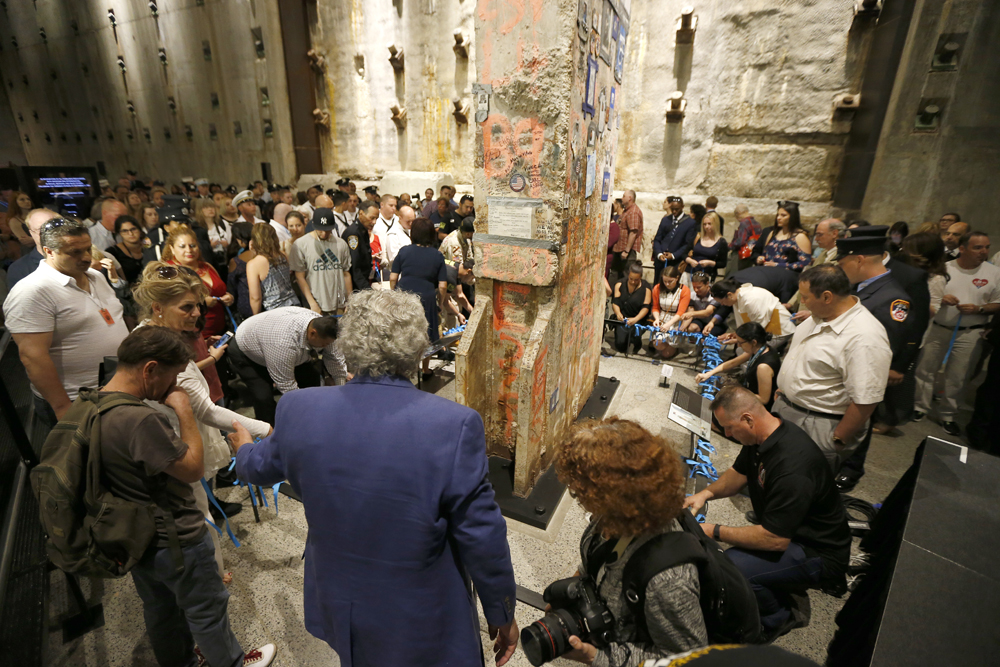Make a donation to the museum
John Feal’s Red Bomber Jacket Added to Museum Collection
John Feal’s Red Bomber Jacket Added to Museum Collection

Nearly 15 years ago, through the wretched acts of a few, thousands of innocent lives were lost, leaving millions to mourn in their enduring memory.
Despite their evil intentions, compassion and unity were created in the wake of the attacks. United together, men and women from around the country and world rushed to provide assistance at the site now known as ground zero. United together: firefighters, police officers, construction workers, military personnel, correction officers, demolition experts, court officers, medical personnel and volunteers and many others became one, joined by a common cause. They came together to aid in rescue, recovery and clean-up operations and to help lift America back to its feet.
The brave and benevolent actions of these first responders underscored the American spirit and gave fuller meaning to the word unity.
These heroic World Trade Center first responders began experiencing devastating illness. Those that had given so much of themselves in the days, weeks and months after 9/11 were now giving even more, their own health. Breathing issues, psychological illness and incurable lung conditions were the first to be seen. Soon followed cancers, immunodeficiency and other disorders attributed to their exposure to toxins at ground zero.
As their illnesses worsened, many lost jobs and economic hardships worsened because of mounting medical bills. To help, I founded a charitable organization called the Feal Good Foundation, to provide these men and women with economic and legal assistance while advocating for additional medical care.
I really wanted to help my sisters and brothers. On Sept. 17, 2001, I was severely injured as I worked as a demolition expert during the rescue and recovery operations.
Thousands of first responders joined my foundation, representing all trades, occupations and volunteer groups. Supporters were always clearly identifiable in any crowd by virtue of wearing the organization’s hallmark color, red.
Foundation members dressed in red flanked me in my signature red bomber jacket as we advocated in Congress for the passage of the James Zadroga 9/11 Health & Compensation Act and later its reauthorization. The bill provides first responders with the proper medical treatment and compensation for their injuries and illnesses they have sustained.
My jacket became the symbol of unity among the first responders, adorned with patches from the FDNY, NYPD, the city’s Department of Corrections, and the NYPD Emergency Service Unit. It also had a 9/11 anniversary patch that was presented to the Feal Good Foundation by a non-uniformed worker and serves to signify the unity of purpose that all first responders had in passing the James Zadroga Act. In December 2011, dubbed the “Christmas Miracle,” the James Zadroga Act was passed by Congress and signed into law by President Obama. Upon passage of the bill, I wore that red bomber jacket as I stood in solidarity with congressional leaders, union officials and fellow first responders in celebration.
When in 2015 the time came for Congress to consider reauthorization of the Zadroga Act, I again donned the red bomber jacket. And with supporters, again united, we advocated until the reauthorization act passed.
I didn’t need to wear the jacket anymore. But the story it holds should be preserved. I donated it to the 9/11 Memorial Museum so future generations will always be reminded of what these men and women sacrificed.
By John Feal, founder of the Feal Good Foundation
Previous Post
Colleagues Use Special Chair to Save Quadriplegic on 9/11

Mike Fabiano was knocked off his chair and immediately urged his colleagues on the 69th floor of the North Tower to begin evacuating.
Next Post
9/11 Rescue and Recovery Workers Are Honored at Memorial Museum

In recognition of the 14th anniversary of the formal end of recovery operations at the World Trade Center, the National September 11 Memorial & Museum held a special tribute to honor the men and women of the nine-month rescue and recovery effort.